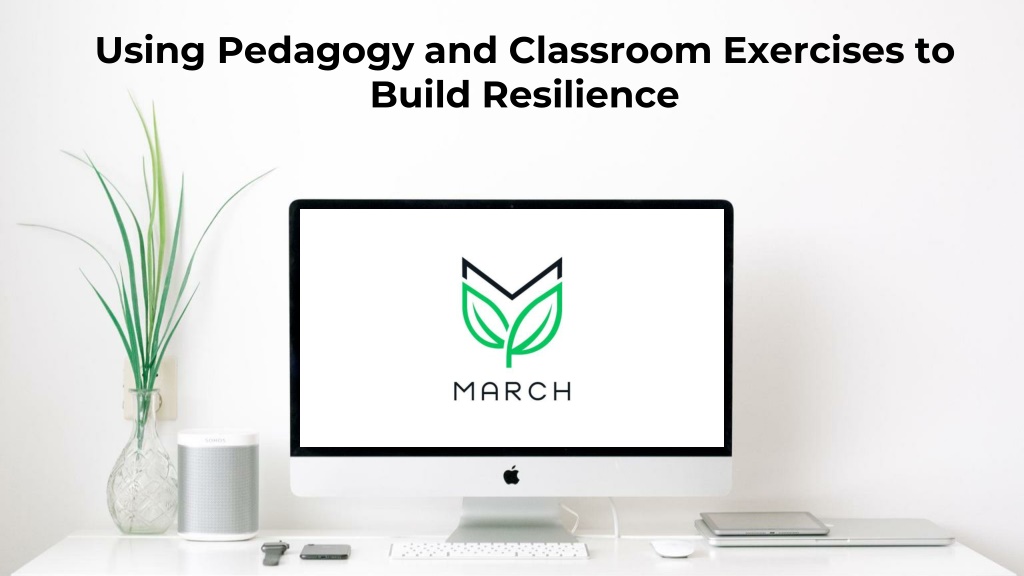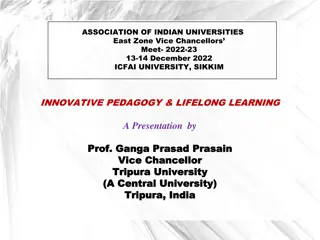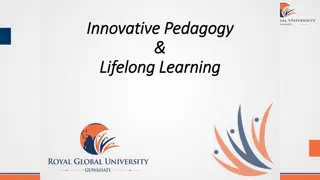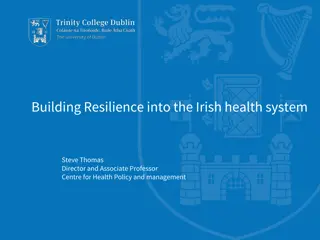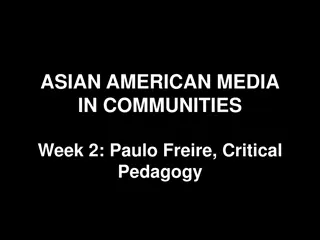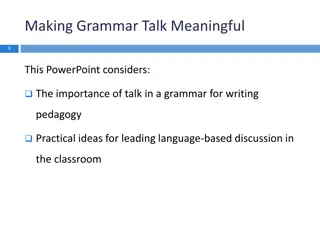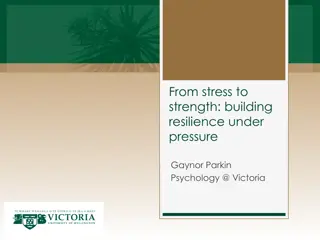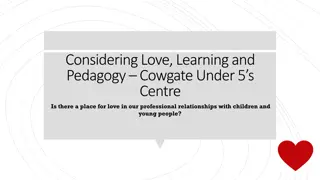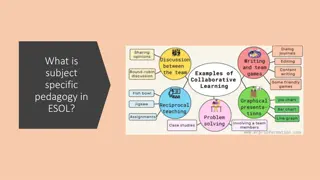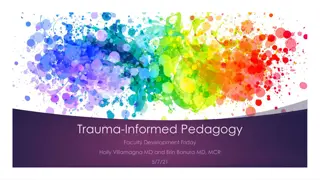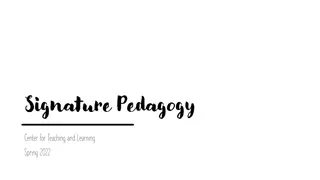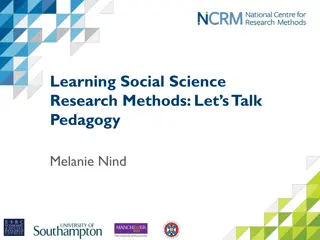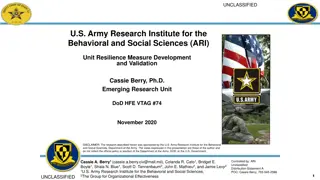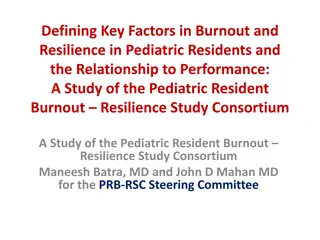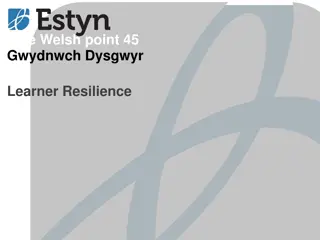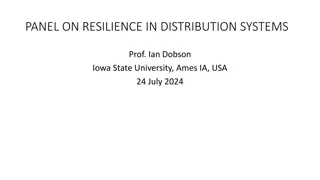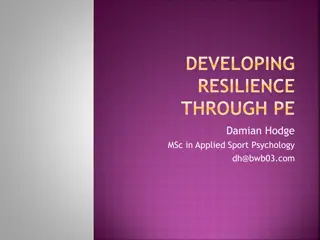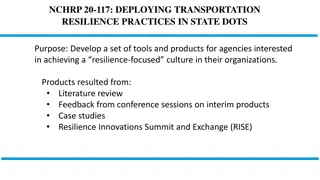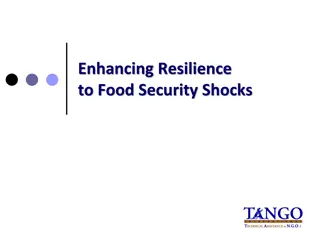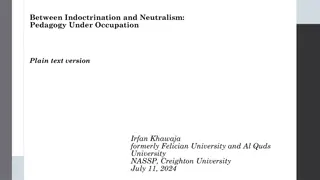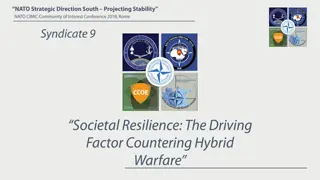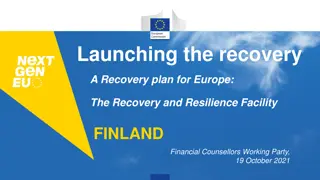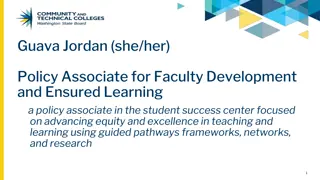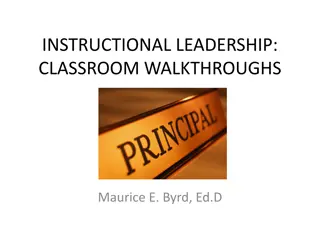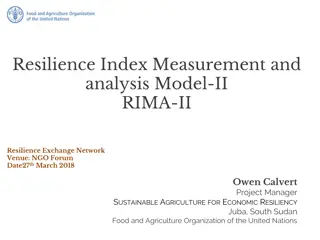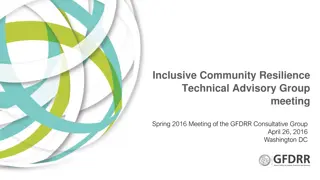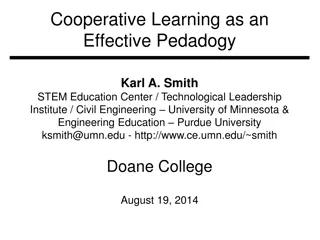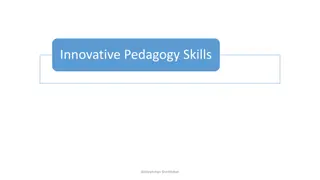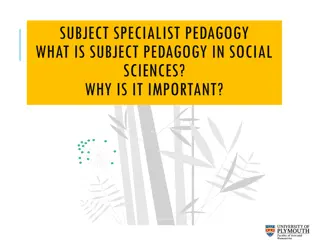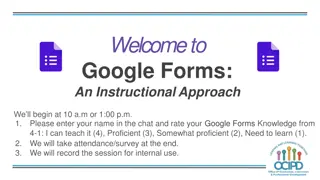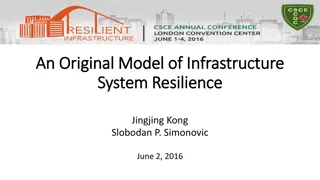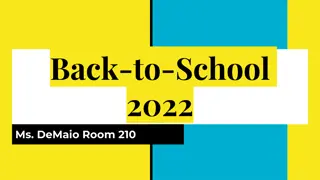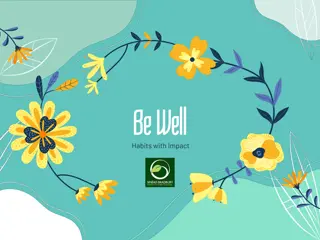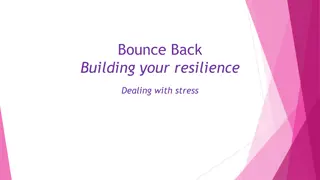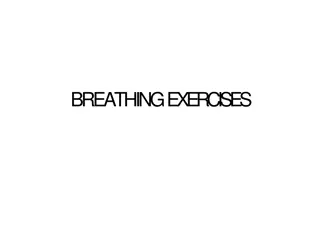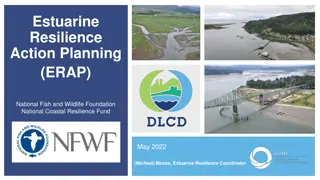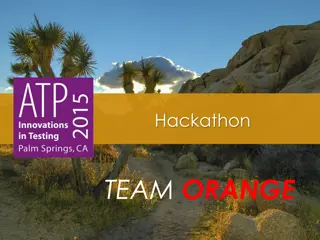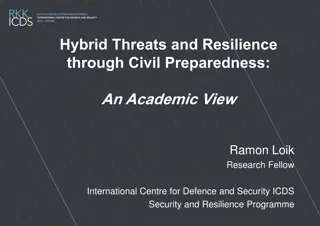Enhancing Resilience through Pedagogy and Classroom Exercises
Explore the use of pedagogy and classroom exercises to build resilience in learners by addressing neurological changes, epigenetic shifts, ADHD, loneliness, and long-term stress. Two main ideas are presented: embracing fear and managing change. Each idea includes pedagogical strategies, lesson objectives, and tasks aimed at helping learners develop resilience in the face of challenges.
Download Presentation

Please find below an Image/Link to download the presentation.
The content on the website is provided AS IS for your information and personal use only. It may not be sold, licensed, or shared on other websites without obtaining consent from the author. Download presentation by click this link. If you encounter any issues during the download, it is possible that the publisher has removed the file from their server.
E N D
Presentation Transcript
Using Pedagogy and Classroom Exercises to Build Resilience
Changes in neurology and behaviour 1. Epigenetic shifts 2. ADHD 3. Neurological changes 4. Loneliness 5. Long-term stress
Idea 1: Embracing fear in the present day is good practice for the working world (Booklet pages 6-9) 1. How does this build resilience? Learners need to know that fear is a neuro reaction that can be controlled. Teenagers struggle with reasoning. 1. What is the pedagogy? Piaget s constructivism Real-life scenarios will help a learner to understand the topic being presented Tasks that are authentic help memorisation
Lesson objectives: Realise fear is rational Practice techniques from managing workplace scenarios Relate this workplace scenario to everyday life Task and resources: Task 1. Show animation of fear in the brain Task 2. Provide a vocationally based scenario and groups come up with a list of ways to cope with this scenario and calm their amygdalae Task 3. Have a class debate on effective ideas Task 4. Grounding techniques (i.e., water, 5,4,3,2,1 and ice method)
Idea 2. Get ready to embrace, enjoy and manage change because the working world, as well as our personal lives, will be filled with it (Booklet pages 9-15). 1. How does this build resilience? Prepare learners for future change that will inevitably occur Realise that change is just a moment in time that will pass 1. What is the pedagogy? Vygotsky s Social Constructivism Zone of Proximal Development Model, Question, Independent and Automatization
Lesson objectives: Recognise that change is inevitable Take-away strategies to manage changes Decide if problem-solving tools are useful Task and resources: Task 1. Show animation of John who is becoming a father Task 2. Questions to help take ownership Task 3. Subject-based problem (i.e., your company is moving, strategise on the fishbone) Task 4. Interleaving to help automatization
Idea 3. Oranges from Valencia (Booklet pages 16-22) 1. How does this build resilience? Negotiation skills help us to manage conflict with empathy Provides an important tool in our bag of tricks 1. What is the pedagogy? Cognitive psychology How the brain memorises Action, doing and movement is key to this
Lesson objectives: 1. Take-away negotiation techniques for any situation 2. Recognise the benefit of showing empathy to others 3. Practice negotiations skills to help memorise methods Task and resources: Task 1. In groups, learners explore negotiation techniques Task 2. Provide oranges to both groups and start the task Task 3. Learners identify successful techniques and how positive language helped
Idea 4. Lesson in a Tardis to realise our place in history (Booklet pages 22-24) 1. How does this build resilience? Helps learners recognise now is only a moment in time Recognising we can contribute to history Explore time management tips (optional) 1. What is the pedagogy? Frederic Bartlett s Schema Theory Familiar things build memories Improved recall
Lesson objectives: 1. Realise that the areas we are studying have a history and others have paved the way sometimes at great sacrifice 2. Reflect on how we may become a part of this history 3. Our point in history is only a short moment Task and resources: Task 1. Dr Who theme tune to help remind learners Task 2. Research topic through time Task 3. Present difference on eras and reflect on our generation s contribution
Idea 5. Communication skills to help the learner be assertive at work (Booklet pages 24-32) 1. How does this build resilience? Under the pillar of emotional resilience, you can help your learners find easy sentences that will help them to be calm but assertive Helps learners realise that a part of being a positive employee is accepting justified comments but speaking up when needed 1. What is the pedagogy? Liberationism The tutor helps the learner to find freedom through education How can you learn when you are hungry and cold?
Lesson objectives: 1. Take away communications strategies 2. Learn the difference between rudeness and expression of rights 3. Build assertion skills Task and resources: Task 1. Learners explore the communication techniques given Task 2. Learners are given scenarios and they match these to the techniques Task 3. Learners practice these ideas
Overcoming self-sabotage
Stress_words.mp4 How does stress make you feel?
A Beginners Guide to Having Good Self-Esteem
output_HD720_(6).mp4 Body confidence
Embracing stress.mp4 The difference between stress and anxiety
